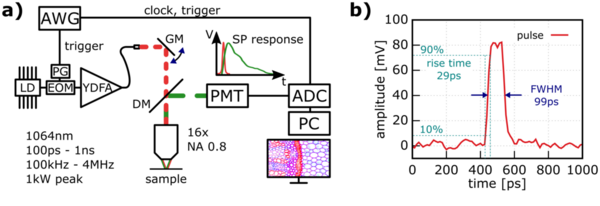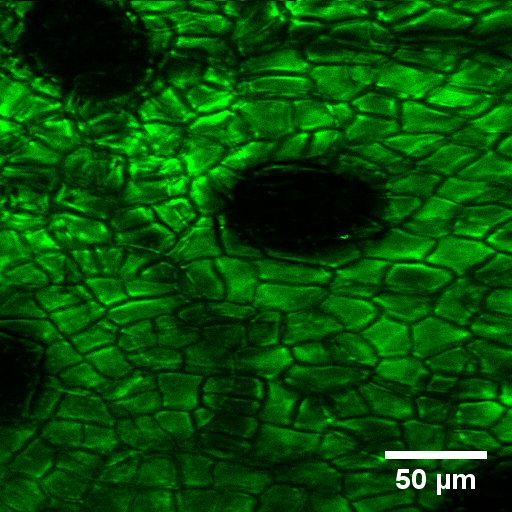In recent years, multiphoton microscopy evolved as a way of biomedical imaging of scattering tissues with a highly specific selection of layers. Current multiphoton microscopes employ complicated lasers systems. Hence, we investigate different approaches. The excitation laser of our system is an all fiber based, sub-nanosecond pulsed laser. This makes the overall setup very robust, reliable, and maintenance free. One key advantage of the system is the direct synchronization of the excitation pulses to the data acquisition which makes new imaging modalities possible.
The use of completely fiber-based lasers also has the advantage that no pulse precompensation is required when using endoscopes, as is the case with the Ti:Sa lasers that are normally used. Thus, the construction is clearly simplified and therefore more economical. Since all our lasers are fiber-based, a multimodal system can be created using multiferrules (OCT, TPEF or theoretically TiCO Raman), which allows a wide range of information to be gathered.
By using nonlinear effects like frequency doubling, the bandwidth of our lasers is increased and therefore interesting for more fluorophores or the autofluorescence of tryptophan in the UV region at 266 nm.













